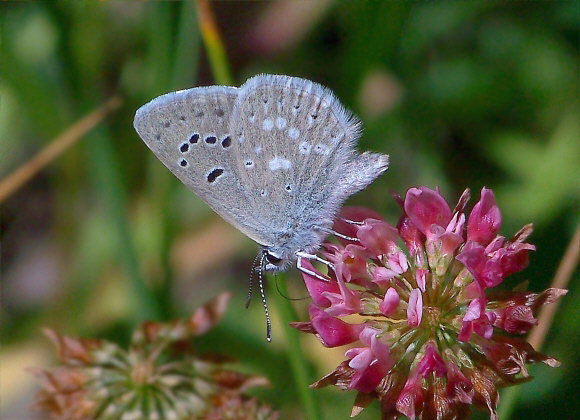
Introduction
This species has at various times been classified under several different genera including Plebejus, Pseudaricia, Eudemonia, Aricia and Ultraaricia. Phylogenetics is not an exact science, so different workers reach different conclusions about the evolution and relationships between various species.
Currently some authorities place icarioides in the genus Aricia which comprises of about 30 species distributed variously across North America, Europe and temperate Asia. Aricia is split into several subgroups. The 7 North American species being placed in the icarioides group, but this subgroup is elevated to the rank of genus by other authorities. The icarioides subgroup are therefore placed in this new genus Icaricia.
The males of most species including icarioides are metallic blue, with narrow suffused dark brown borders. Most are otherwise unmarked except for a small dark dash at the end of the discal cell. In lupini, cotundra and neurona however males have a series of orange submarginal lunules on their upperside hindwings. The females of all species are brown, and usually have orange lunules on the hindwings. Females of cotundra, lupini and some subspecies of icarioides and saepiolus have a metallic blue sheen but this is not as intense or extensive as in the males.
The commonest and most widely distributed species is icarioides . It is found in Mexico, the Rocky Mountain states of the USA, and in the border region around British Columbia and Alberta.
Habitats
This species breeds in alpine meadows and pastures, and on flowery open grasslands.
Lifecycle
The egg is greenish-white and is laid singly on the leaves, stems, flowers and seed pods of Lupinus ( Fabaceae ). The larva hibernates in the 2nd instar amongst leaf litter at the base of the foodplant, and resumes feeding in spring, when it is attended by ants. When fully grown the larva is mid-green with a dark purplish dorsal stripe, and feint whitish diagonal bars along the back and sides. There is also a dark purplish-red morph of the larva.
Adult behaviour
Males imbibe mineralised moisture from damp ground, either singly or in aggregations with other Polyommatines. They patrol constantly in search of females and are easy to find, but the females are sedentary in behaviour and harder to locate. Mated pairs can sometimes be found basking with wings in the characteristic three-quarters open position. They remain in copula for about an hour.
